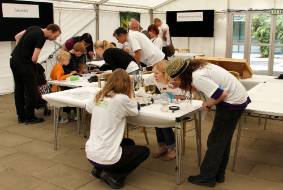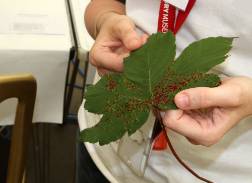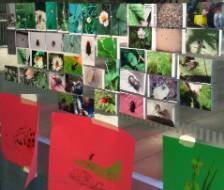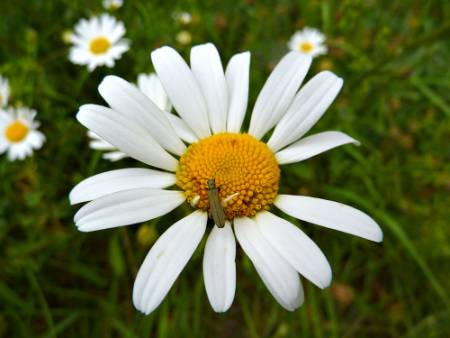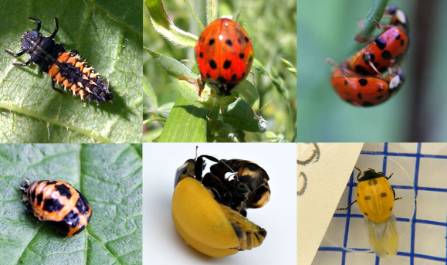
A selection of ladybird photos taken on Big Nature Day. Top row: All harlequin ladybirds, first is a larva. Bottom row: Left, an orange harlequin; middle and right, a 7-spot ladybird emerging from its pupa - its yellow colour turns to red in about 24 hours.
On the day hundreds of visitors, including many excited children and myself, joined in the Big Nature Count, a bioblitz of the Museum's Wildlife Garden. Researchers and volunteers were out and about with traps, nets and cameras, conducting samples of wildlife in the 24-hour nature census. A big malaise trap tent had been set up for flying insects, light traps for moths and pitfall traps - little jars in the ground - to attract ground beetles and slugs.
We were celebrating the International Day for Biological Diversity on 22 May. It was sure to be a busy event. With over 300 plant species in the garden there is a lot to attract a wide variety of insects.
Watch the Big Nature Day highlights in this video
The meeting point was the Base Camp tent outside on the Darwin Centre Courtyard, where groups could follow Big Nature Count guided tours with our Museum scientists. But many people simply made their own trails through the Wildlife Garden.
Inside the Base Camp tent, scientists sorted through the samples collected. There were lots of things to see, like a huge stag beetle that I even let run across my hand.
Base Camp: Visitors and researchers sift through samples collected and get hands-on. Right: Investigating plant galls on a sycamore leaf, the red swellings are the plant's defensive response to attack from mites. Select all images to enlarge them
Out in the Wildlife Garden on our discovery trails, we stopped at various tables dotted around the meadows and ponds. Here, helpful experts suggested places to search. On the tables were displays of creatures and samples already collected. My favourite place was the pondlife table. I got rather attached to a shy toad.
Heading into the Darwin Centre atrium after our garden adventures, we had some of our photos printed and added to the Photo wall (below left). After that, it was off to the Specimen Roadshow (below right) to marvel at Ed Buller's flies and wasps, Sandy Knapp's vegetable extravaganza and some 'mucky' soil identification tests.
Because of the gusty weather, there weren't many moths collected in the traps set the night before. And the
recent dry spell meant the worms decided to stay underground. Emma Sherlock who led the worm charming sessions said:
'There were lots of people, but not many worms sadly. Strangely the winning worm charming technique was the stamping while playing the tamborine... hmmm!'
 Our entomologists, however, were excited to discover an unusual fly in the day's bioblitz. The little drab wood soldier fly, hasn't been seen before in the Wildlife Garden. Read the news story about the unusual fly found in the Museum's garden bioblitz.
Our entomologists, however, were excited to discover an unusual fly in the day's bioblitz. The little drab wood soldier fly, hasn't been seen before in the Wildlife Garden. Read the news story about the unusual fly found in the Museum's garden bioblitz.
All in all, hundreds of plant and animal species were found in the Big Nature Count. Most of the creatures collected were set free after they had been recorded, but a few individual specimens will be kept in the Museum's collection because they are important for research. It will take a bit more time to identify everything and interpret the findings so we can understand more about our local wildlife, but we hope to have a final count shortly.
Look out for a video account of the day coming soon.
Find out more about the Wildlife Garden
Learn more about harlequin ladybirds
Get involved in British natural history



